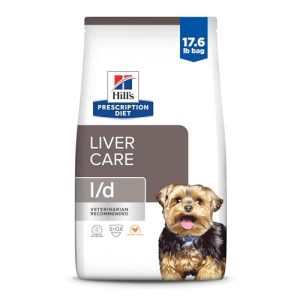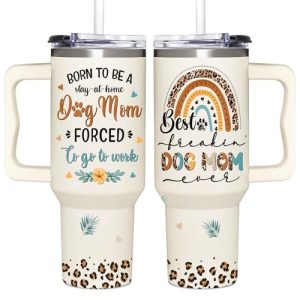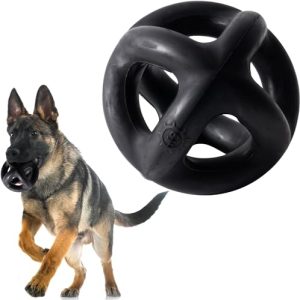Choosing the right size dog crate can feel tricky, but it’s one of the most important decisions for your pet’s comfort and safety. You want a crate that gives your dog enough room to move, stretch, and relax, without being too big or too small.
If you get it wrong, your dog might feel cramped or insecure, and you could end up with a mess to clean. Don’t worry—this guide will help you find the perfect fit for your furry friend. Keep reading to discover how to measure, what to look for, and tips to make your dog’s crate a happy, cozy space.
Choosing The Right Crate Size
Choosing the right crate size is key to your dog’s comfort and safety. A crate that is too small can feel cramped and stressful. Too large a crate may not provide the cozy space dogs often prefer. The right size allows your dog to stand, turn, and lie down easily. This ensures a happy, secure environment for your pet.
Measuring Your Dog Accurately
Measure your dog from the tip of the nose to the base of the tail. Add a few inches for extra space. Next, measure from the floor to the top of the head or ears. This helps find the crate height your dog needs. Accurate measurements prevent buying a crate that is too small or too large.
Considering Your Dog’s Breed And Growth
Different breeds have different sizes and shapes. Puppies grow fast, so consider their adult size. For growing dogs, choose a crate with adjustable dividers. This allows you to expand the space as your dog grows. Breed traits also affect crate choice, like long bodies or tall frames.
Types Of Dog Crates And Their Sizes
There are many crate types, each with size options:
- Wire crates:Offer good ventilation and visibility.
- Plastic crates:Provide a cozy, enclosed space.
- Soft-sided crates:Lightweight and portable, best for calm dogs.
- Heavy-duty crates:Made for strong or escape-prone dogs.
Check manufacturer size charts before buying. Match your dog’s measurements to the crate dimensions listed. This ensures the crate fits your dog's needs perfectly.
Crate Size Guidelines By Dog Size
Choosing the right crate size for your dog is crucial for their comfort and safety. The crate should be large enough for your dog to stand, turn around, and lie down comfortably, but not so big that they have extra space to use as a bathroom. Understanding the crate size guidelines based on your dog’s size helps you make the best choice for their well-being.
Small Breeds
Small breeds like Chihuahuas, Pomeranians, and Yorkshire Terriers usually need crates sized between 18 to 24 inches in length. These crates provide enough room for them to move comfortably without feeling lost in a large space.
Think about your dog’s favorite sleeping position. If your small dog curls tightly, a smaller crate works well. If they stretch out, go for the larger end of the size range.
Medium Breeds
Medium-sized dogs such as Beagles, Cocker Spaniels, and Bulldogs often do best in crates ranging from 24 to 30 inches long. This size supports their active nature and provides space without excess room that could encourage accidents.
Remember, your dog’s age matters too. Puppies from medium breeds need a crate that grows with them or adjustable dividers to avoid buying multiple crates.
Large Breeds
For large breeds like Golden Retrievers, Labradors, and German Shepherds, crates between 36 to 42 inches are usually ideal. These crates allow ample space for stretching and turning around comfortably.
Have you noticed how your large dog moves when resting? If they like to sprawl, pick a crate on the bigger side. This keeps them cozy and happy during crate time.
Extra Large Breeds
Extra large breeds such as Great Danes, Saint Bernards, and Mastiffs require crates starting at 48 inches and above. These sizes accommodate their significant height and length, giving them room to relax safely.
Consider your dog’s full-grown size rather than their current size if you’re crate training a puppy. An oversized crate that suits their adult size prevents frequent upgrades.
Factors Influencing Crate Size
Choosing the right size dog crate depends on several important factors. Each dog is unique, and their needs vary based on age, purpose, and space. Understanding these factors helps ensure your dog feels safe and comfortable. A well-sized crate supports good behavior and health.
Your Dog’s Age And Growth Stage
Puppies grow fast, so size changes quickly. A crate too small will feel cramped. Choose a crate that fits your puppy now but allows room to grow. For adult dogs, measure their length and height to pick the right size. Give enough space to stand, turn, and lie down comfortably.
Crate Purpose: Travel Vs. Home Use
Travel crates need to be sturdy and compact for safety. They should fit in cars or planes easily. Home crates can be larger for comfort. Dogs spend more time in these crates. Choose a size that offers enough space for rest without wasting room.
Space Available At Home
Measure the area where the crate will sit. Ensure the crate fits without blocking doors or walkways. Consider the crate’s style and shape. Some crates fold or stack for easier storage. A crate that fits your space keeps your home tidy and your dog happy.
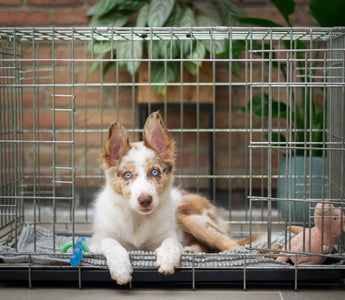
Credit: bullybeds.com
Measuring Tips For A Perfect Fit
Choosing the right size dog crate starts with accurate measurements. A well-fitted crate offers your dog a safe, cozy space. Measuring your dog properly ensures comfort and usability. Here are essential tips for measuring your dog’s crate size.
Length, Height, And Width Requirements
Measure your dog from nose to tail for length. Add a few inches for extra space to stretch out. For height, measure from the floor to the top of the head or ears. Width should allow your dog to turn around easily. These three dimensions guide the crate size selection.
Allowing Room For Comfort
Dogs need room to stand, turn, and lie down comfortably. The crate should not be too tight or cramped. Add about 2 to 4 inches to each measurement. This space helps your dog relax and reduces stress. Comfort is key to crate acceptance.
Avoiding Oversized Crates
Too large crates can cause anxiety and accidents. Dogs may use one corner as a bathroom if the space is too big. Choose a crate that fits snugly but still offers comfort. This balance helps maintain cleanliness and security.
Crate Material And Design Impact
The material and design of your dog’s crate affect more than just its look. These factors influence durability, comfort, ventilation, and even how easy the crate is to clean or transport. Choosing the right crate material and design can improve your dog’s crate experience and fit your lifestyle better.
Wire Crates
Wire crates offer excellent airflow and visibility. Your dog can see out clearly, which helps reduce anxiety for many pups. They are easy to clean and often fold flat, making them great for travel or storage.
However, wire crates may not provide enough warmth or privacy for some dogs. If your dog tends to chew, the wires might not hold up well. Consider adding a crate cover for a cozy den-like feel and to block distractions.
Plastic Crates
Plastic crates provide a more enclosed, secure space. They offer better insulation against cold drafts and give shy dogs a quiet, private area to relax. Many airlines require plastic crates for travel because of their sturdy design.
They can be heavier and less ventilated than wire crates, so keep an eye on airflow during hot weather. Plastic crates often have fewer visibility options, which might not suit dogs who like to see their surroundings.
Soft-sided Crates
Soft-sided crates are lightweight and easy to carry, perfect for small dogs or short trips. They often fold down compactly, saving space when not in use. The fabric sides provide a cozy atmosphere but may not be durable enough for dogs who like to chew or scratch.
They usually offer less ventilation than wire crates, so make sure your dog stays comfortable and cool. Ask yourself if portability or sturdiness is more important for your dog’s lifestyle before choosing a soft-sided option.
Adjustable And Expandable Crates
Adjustable and expandable dog crates offer a flexible solution for pet owners who want to provide a comfortable space that grows with their dog. These crates adapt to your dog’s size and changing needs, making them a smart investment. Whether you have a puppy or a full-grown dog, these crates can save you time and money in the long run.
Benefits Of Adjustable Crates
Adjustable crates let you change the size of the enclosure as your dog grows or if you need to create more room. This means you won’t need to buy multiple crates over time. You can start with a smaller space for your puppy and gradually expand it to suit their adult size.
They also help reduce anxiety by providing a cozy, secure space that fits your dog perfectly. A crate that’s too large can make your dog feel unsafe, while an adjustable crate ensures the space is just right. Plus, these crates often come with easy-to-use sliders or panels, so you can adjust the size without any tools.
When To Choose Expandable Options
If you want a crate that can do more than just adjust length or width, expandable crates might be the best choice. These crates can increase in multiple dimensions or even connect to additional sections, offering extra space for play or rest.
Expandable crates work well if you have multiple dogs or if your pet spends a lot of time in the crate and needs room to move around. They are also great for dogs that are still growing or if you want the option to use the crate for different purposes, like travel or training.
Have you thought about how much space your dog really needs during different stages of life? Adjustable and expandable crates make it easy to meet those changing needs without constantly buying new equipment.
Common Mistakes In Choosing Crate Size
Choosing the right size dog crate can be trickier than it seems. Many pet owners make common mistakes that affect their dog’s comfort and safety. Understanding these errors helps you avoid frustration and ensures your furry friend feels secure.
Buying Too Large Or Too Small
A crate that’s too small can make your dog feel cramped and stressed. Imagine being stuck in a tiny space with no room to move—that’s how your dog feels. On the other hand, a crate that’s too large can encourage your dog to use one corner as a bathroom, which defeats the purpose of crate training.
Think about your dog’s size when sitting, standing, and turning around. A good rule is to choose a crate just big enough for comfortable movement without excess space.
Ignoring Growth Potential
Puppies grow fast, so buying a crate that fits only their current size can mean outgrowing it in weeks. But buying an oversized crate right away isn’t the answer either. It can confuse your puppy and reduce the crate’s effectiveness as a safe, cozy den.
A practical solution is to get a crate with a divider panel. This allows you to adjust the space as your dog grows, saving you money and keeping your pup comfortable through each stage of growth.
Overlooking Your Dog’s Comfort
Comfort goes beyond size. Does the crate have good ventilation? Is the floor soft enough to prevent sores? These details matter because your dog will spend a lot of time inside.
Adding a soft mat or blanket can make a big difference. You want your dog to see the crate as a positive, relaxing space—not just a confinement area. When was the last time you considered how your dog feels inside their crate?
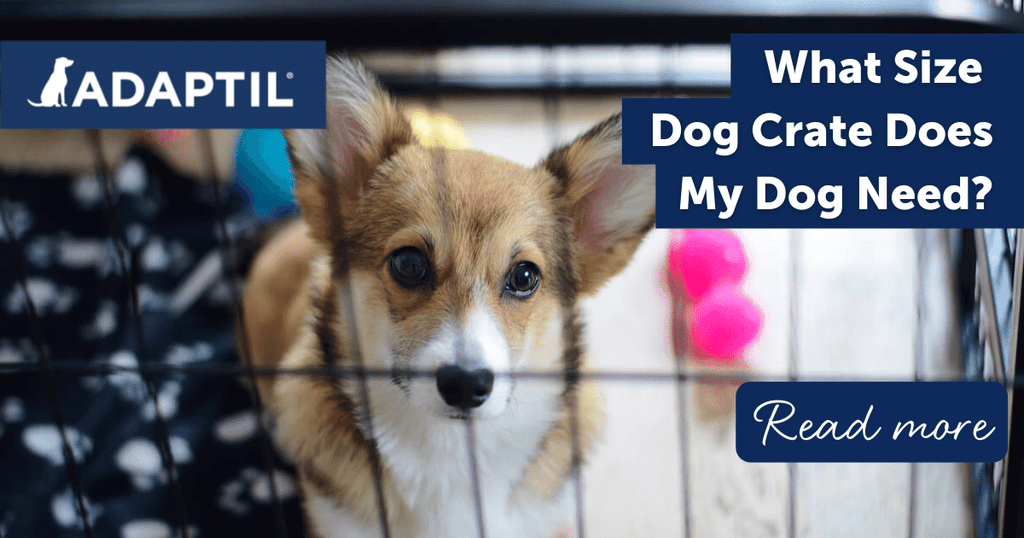
Credit: www.adaptil.co.uk
Tips For Introducing Your Dog To The Crate
Introducing your dog to a crate requires patience and care. The crate should feel like a safe space, not a place of punishment. Use gentle methods to help your dog feel comfortable and secure inside the crate. This helps build trust and reduces anxiety.
Making The Crate Inviting
Place soft bedding inside the crate for comfort. Add your dog’s favorite toys or a chew bone. Keep the crate in a busy area where the family spends time. This makes your dog feel part of the household. Leave the door open at first to encourage exploration.
Positive Reinforcement Techniques
Use treats to reward your dog for entering the crate. Praise your dog with a happy voice to create good feelings. Never force your dog inside the crate. Give treats only when your dog is calm and relaxed in the crate. This helps build a positive connection with the crate.
Gradual Acclimation Steps
Start by having your dog spend short times inside the crate. Slowly increase the time your dog stays in the crate. Stay nearby at first, then move to other rooms. Avoid closing the door immediately; let your dog get used to it. Gradual steps help your dog feel safe and less stressed.
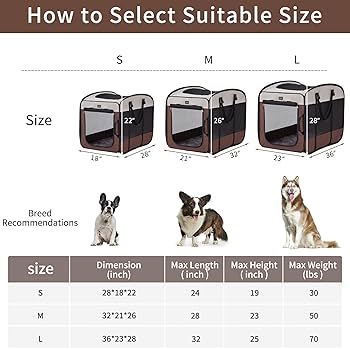
Credit: www.amazon.com
Frequently Asked Questions
How To Measure My Dog For A Crate?
To measure your dog, take its length from nose to tail and height from floor to top of head. Add a few inches for comfort. Ensure your dog can stand, turn, and lie down easily. This will help you choose the right crate size for your furry friend.
Can A Crate Be Too Big For My Dog?
Yes, a crate can be too big for your dog. A large crate may encourage your dog to use one corner as a bathroom. A smaller, snug crate provides a sense of security. It’s important to choose a crate that allows your dog to stand, turn, and lie down comfortably.
What If My Puppy Grows Bigger?
Choose an adjustable crate with dividers for a growing puppy. This allows you to increase space as your puppy grows. Start with a smaller section to prevent accidents. As your puppy grows, adjust the divider to give more room without purchasing a new crate.
Is A Soft Or Hard Crate Better?
A soft crate is portable and good for calm dogs. A hard crate is durable and ideal for travel or chewers. Consider your dog’s behavior and your needs before choosing. Both types should provide enough space for your dog to stand, turn, and lie comfortably.
Conclusion
Choosing the right dog crate size keeps your pet safe and happy. Measure your dog’s height and length before buying. The crate should let your dog stand, turn, and lie down comfortably. A crate too small causes stress; too big feels unsafe.
Think about your dog’s growth if it is still young. Proper crate size helps with training and travel. Your dog will feel secure in a well-fitted space. Take time to find the best crate for your furry friend.

Emily Barker is the founder of ChillDogLife.com, a space dedicated to helping pup parents discover the best dog products, lifestyle tips, and cozy ideas for happier homes.
A lifelong dog lover, Emily combines her passion for pets with a knack for research to share trusted recommendations on everything from toys and furniture to health and everyday care.
Her goal is simple: to make life easier, stylish, and more joyful for dogs and the people who love them.





